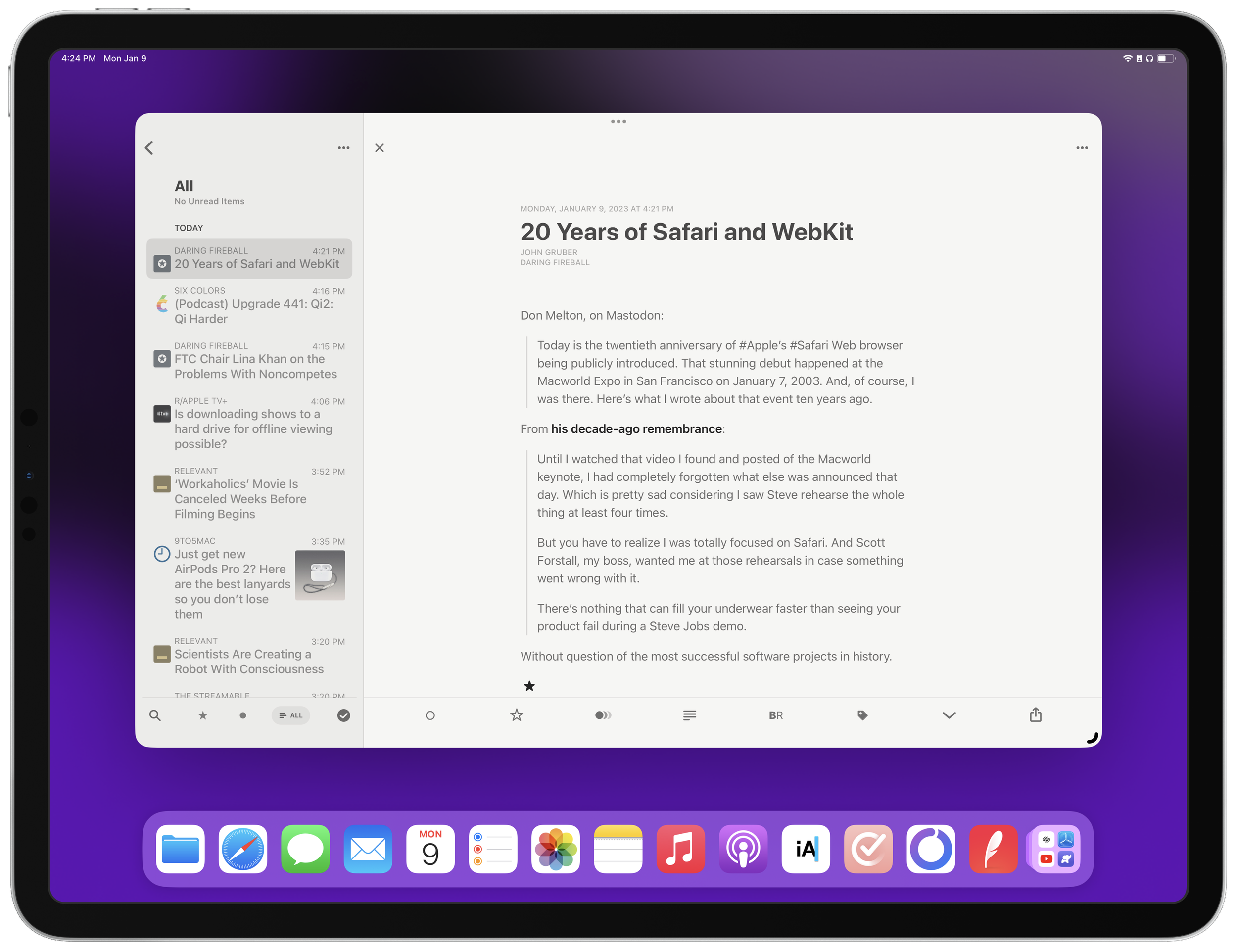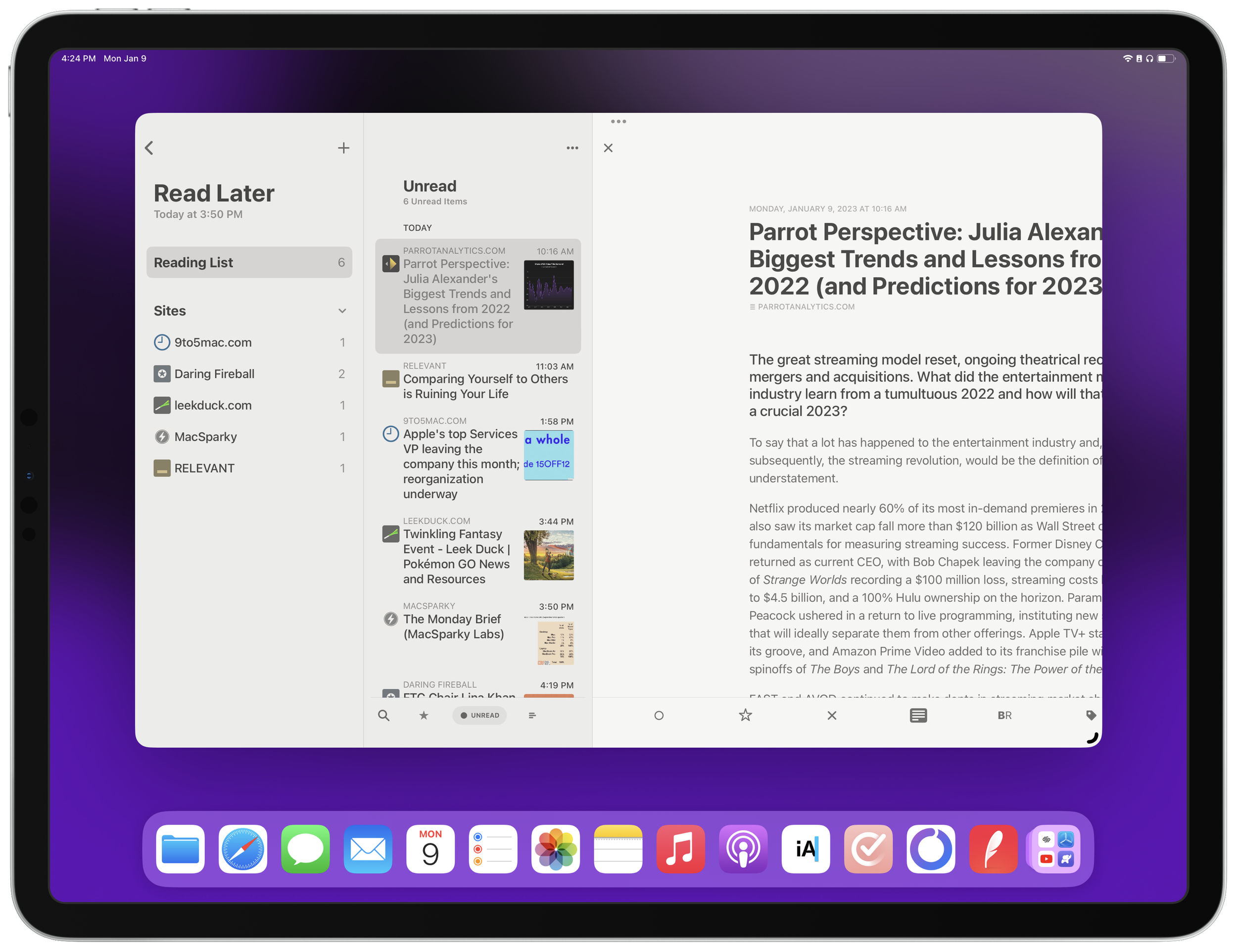The original title for this post was “I Was Wrong About Twitter, Too.” I had this whole article planned out where I was going to talk about how I’d stubbornly held on to the default Twitter app for years, finally tried a third-party client called Spring, and found it to be a much better experience for reading tweets.
Then Twitter unceremoniously shut down third-party Twitter apps, putting a lot of hard-working developers’ livelihoods at risk and ruining my idea for a blog post. Thanks a lot!
My heart goes out to everyone affected: to the developers whose careers are in limbo and to the users who’ve been relying on these apps much longer than I have and suddenly had them ripped away. It’s absolutely unfair. And even if the demise of third-party Twitter apps was inevitable, it didn’t have to happen this way. A true shame.
Twitter’s decision to shut down every app for their service other than their own is rooted in a desire to fully control users’ experiences of the service. The company wants us to use their app, their interface, their way of interacting with others. Why is that? Because it’s better for the bottom line.
Here’s how social media apps like Twitter, Facebook, and Instagram make money: As you scroll your feed, every once in a while you see an ad. Advertisers pay money for those ad spots because they want lots of eyeballs on their products, and social media is a great place to attract some eyeballs. The more you scroll your feed, the more ads you see, and the more money these social media sites make.
This arrangement makes sense at first glance. The social media companies provide a valuable service to you free of charge, and all you have to do in return is look at a few ads mixed in with your friends’ posts and photos. Seems fair, right?
Well, maybe it is in theory. But in practice, this system has created an environment where social media companies are less interested in providing a good social networking service than they are in maximizing profits by showing users as many ads as possible. They’ve already got tons of people signed up. Now they just need them to use the service as much as possible so they’ll be exposed to more and more advertisements.
The social media companies’ not-so-secret weapon in this quest to increase engagement is the algorithm. You might have heard that word before. People often talk about the TikTok algorithm that somehow always shows you an endless stream of videos that fascinate you. Have you ever wondered how they’re able to do that?
I don’t pretend to understand all the intricacies of how they work, but at the broadest level, social media algorithms are computer programs that take information that is known about you and use it to show content that the algorithm thinks will interest you. Using information like your browsing history, location, age, marital status, and previous posts that you’ve spent time looking at or interacting with before, these websites can get a pretty good idea of how to capture your attention with new stuff.
And these algorithms are scarily good. My Instagram account is great at picking up on shows that I watch or celebrities I like to follow and then barraging me with photo after photo related to them. I’ll be dozens of posts deep into my feed before I even realize what I’m doing because I’m captivated. I hardly even notice the handful of advertisements mixed in with the latest Bachelor gossip and Ryan Reynolds memes. I’m just scrolling.
For the longest time, I thought that these algorithms were doing me a favor. After all, they seem to know what I want to see better than I do. So I just accepted them as part of the experience and let them dictate what I saw anytime I opened Twitter, Facebook, or any other social media app.
What I didn’t realize, though, is that these algorithms weren’t really showing me the best content or even the content that I’d chosen to see based on the accounts that I followed. Instead, they were just showing me whatever it took to get me to stay in the app.
The algorithm only cares about engagement, not the quality of the experience that users are having. Sure, it’ll show me things that are genuinely interesting to me. But it’ll also show me posts that it knows will get under my skin in order to get me respond, to post back, to spend more time on the service so I can be shown more ads. The algorithm is optimized to do whatever it takes to keep me engaged as long as possible.
Social media promises us connection and enrichment. But at the end of the day, it’s actually just trying to get us to look at the ads by any means necessary. That’s the bad deal we’ve all been duped into.
I didn’t realize just how much the algorithm was degrading my online experience until I started spending time in places that weren’t algorithmically-based, like Mastodon. It’s a non-profit network of social media sites that functions the way social networks used to, before the algorithm: I follow someone, and then when they post something, it appears in my timeline. I scroll through my timeline and see posts from the people I follow in chronological order until I’ve seen them all, and then my feed ends.
No ads trying to sell me stuff. No algorithm trying to surface posts that will get a reaction out of me. No endlessly scrolling feed. Just cool stuff my friends share. And when I’ve seen everything my friends have to say, I put the app down.
That’s how social media should be. It’s so refreshing, and it makes using the service much more enjoyable.
When I tried opening the Twitter app after spending some time on Mastodon for a while, I was horrified. Most of the posts on my timeline were not from people I followed. They were a mix of ads and recommended posts the algorithm thought I might like. I went through the list of people I was following and realized I hadn’t seen some of their posts in years even though they were active on the site every day just like me! I was missing out on the stuff I cared about because the algorithm wanted to show me something else.
I realized how ridiculous it was to use social media this way, and I made a decision right then to rid myself of the social media algorithms as much as possible. I didn’t want a program choosing what I see on social media or how long I spend there. It was time for me to take control.
So that’s what I’ve been trying to do over the past few weeks. That’s why I downloaded Spring, an alternative app for Twitter that—as of this writing—still works, somehow. (Update on 01.24.23: Twitter has shut down Spring’s access, rendering the app unusable unless you’re willing to use a fairly technical workaround.) It shows me a feed of posts from the people I follow and nothing else. I love it.
Most social media services have reluctantly added non-algorithmic options for users, though they aren’t always the easiest to find:
Instagram buries it behind their logo in the top of their mobile app. Tap the logo and choose “Following” to see a feed of just photos from those you follow.
TikTok offers a secondary Following feed if you swipe right on the For You page. That is, assuming you aren’t distracted by a dance video first.
Facebook offers a Most Recent feed and Friends feed, but you have to dig into the menu to find it.
Even Twitter has separated out the For You (algorithmic) timeline from the Following timeline on the home page, and you can swipe between them. I’ll give you one guess which one is the default every time you open the app, though.
It’s a bit of a chore to get past the algorithm, and that’s by design. But it’s worth it because it allows you to bypass the nonsense and get back to what social media is all about: interacting with your friends and loved ones.
One thing that surprised me when I moved away from algorithmic feeds is how much less content there is to take in. I used to think of Instagram as an endless stream of photos that I could never fully absorb. But in reality, my Following feed is very manageable. In just a few minutes, I can catch up on everything my friends and family have posted throughout the day. I can like and comment on the photos I want to, and then I can close the app knowing that I haven’t missed any of the important stuff.
After a few weeks of taking this approach to social media, I find that I’m getting more enjoyment out of it, doing a better job of managing my time on it, and feeling better overall when I put my phone down. It seems like a small change, but getting the social media algorithms out of my life has actually made a significant difference.
I’ve come to the conclusion that the algorithms are mostly meant to benefit to the social media platforms and offer little to no value to us. Sure, it might be fun to explore and discover some new and interesting stuff from time to time, but that shouldn’t be our default way of interacting online. Social media is supposed to be about connecting us with those we want to interact with, not tricking us into using the app longer with distraction and outrage.
I for one am done with their algorithms. As far as I’m concerned, they can’t be gone soon enough. Even if you’re not convinced to completely avoid these algorithmic feeds, I challenge you to give the alternatives a try and see if, like me, you find them more enjoyable. It takes a few extra taps, but I believe it’ll be worth it.
In this day and age, it’s important to do all we can to maintain a healthy relationship with our devices so that they don’t negatively impact our lives. For me, that means making the great escape from the algorithms. I invite you to take a vacation from them, too.





